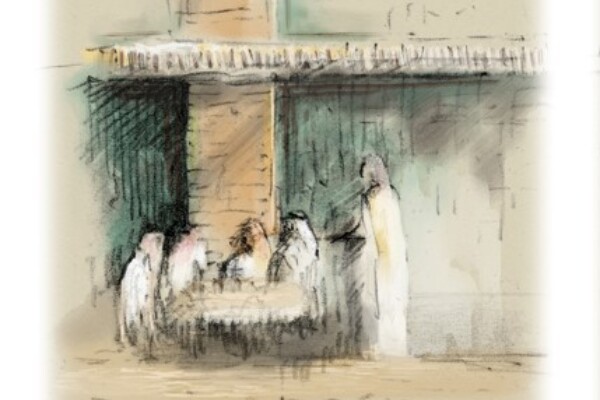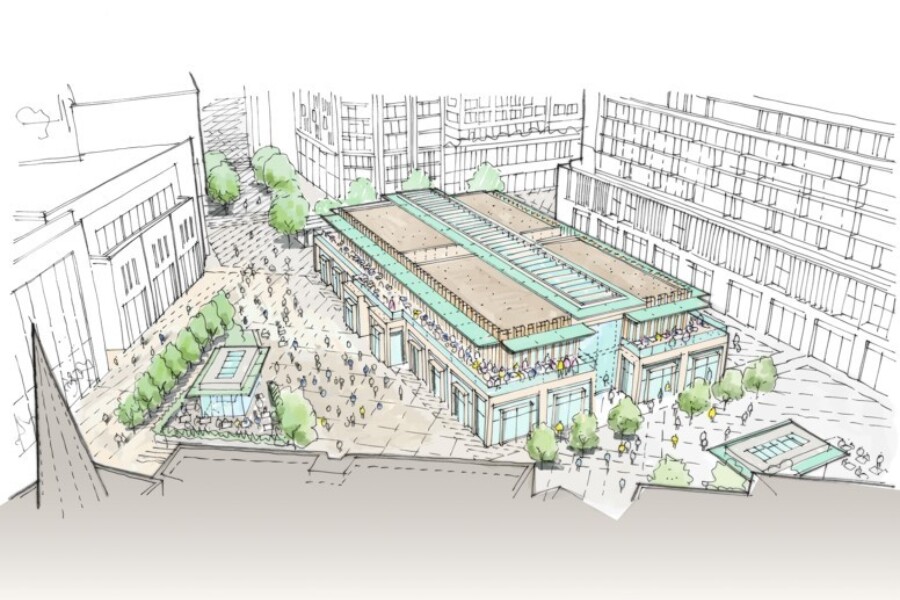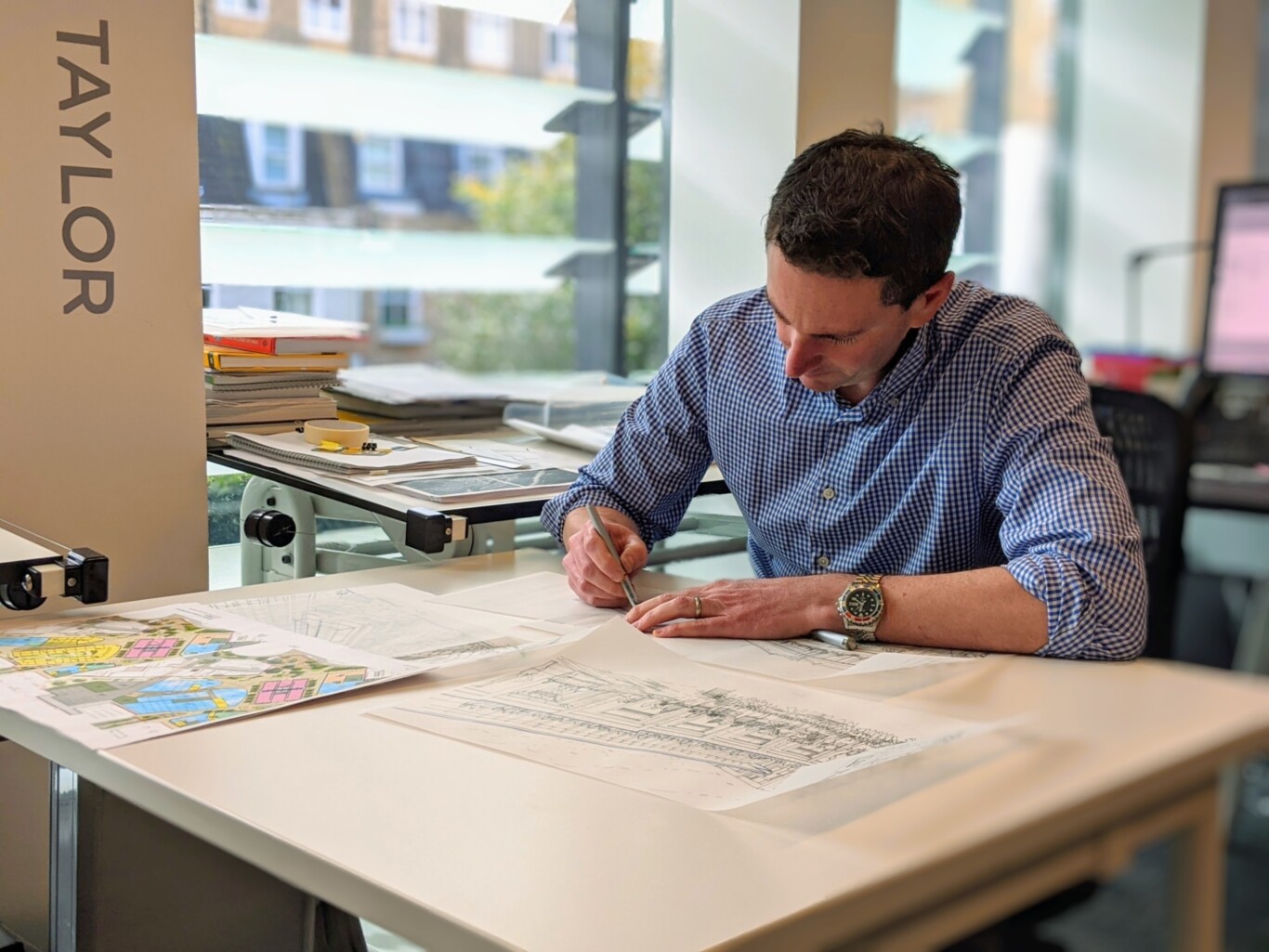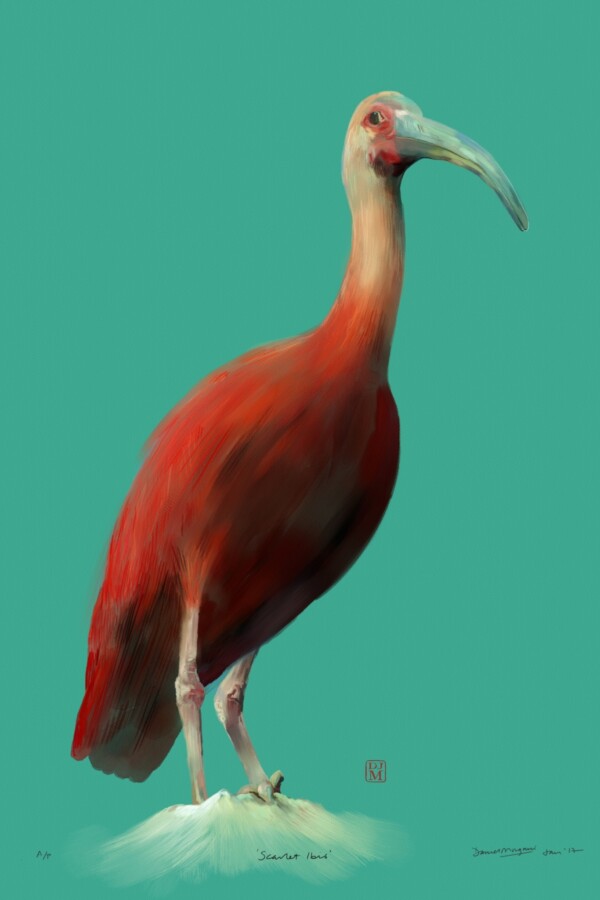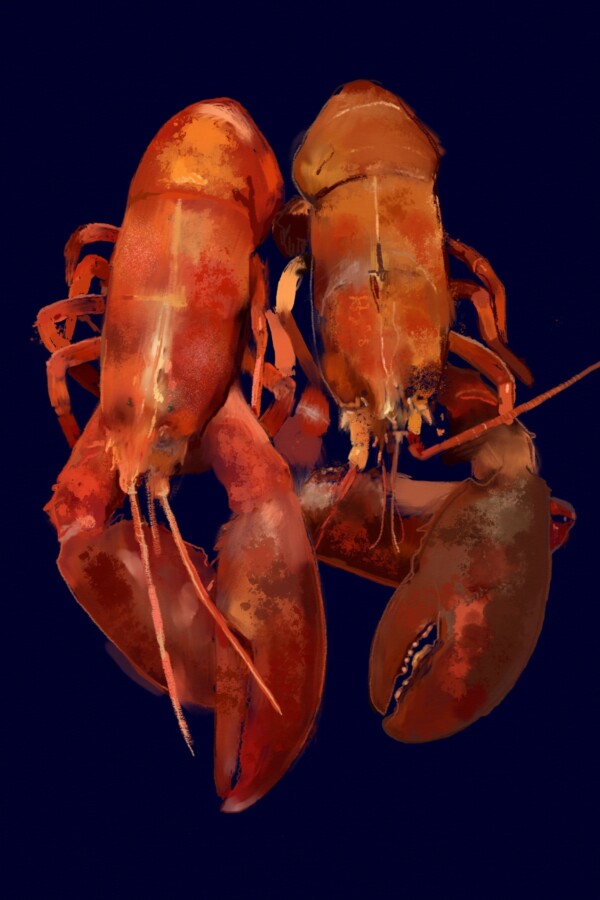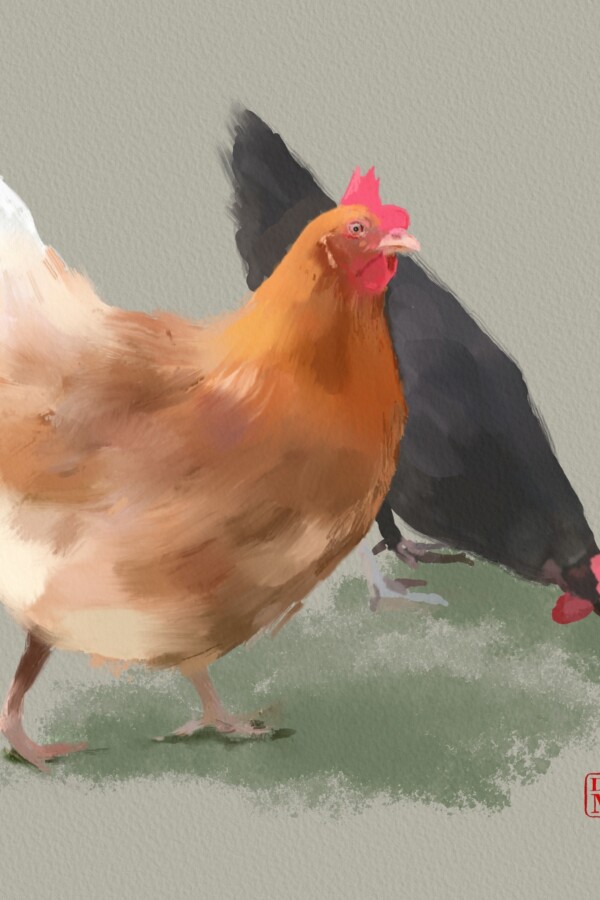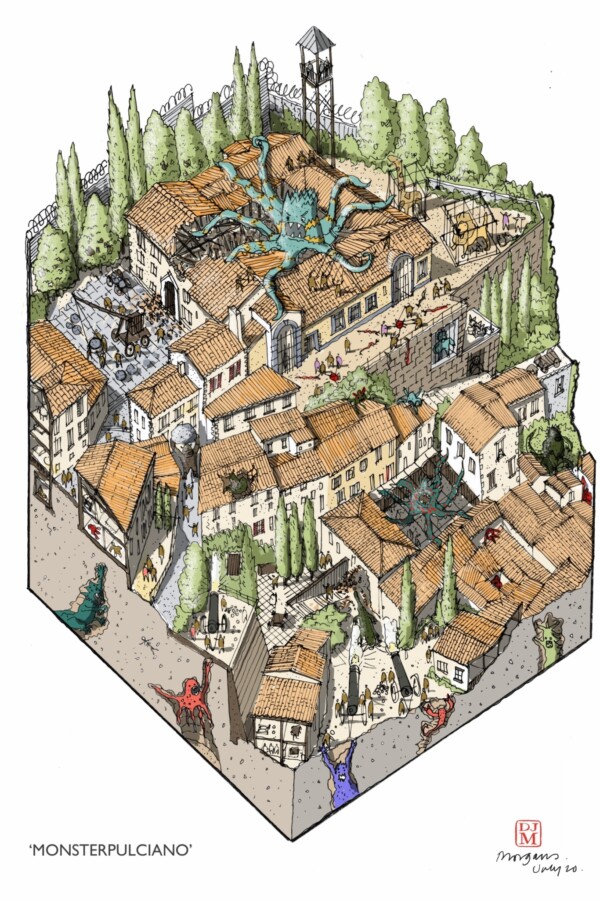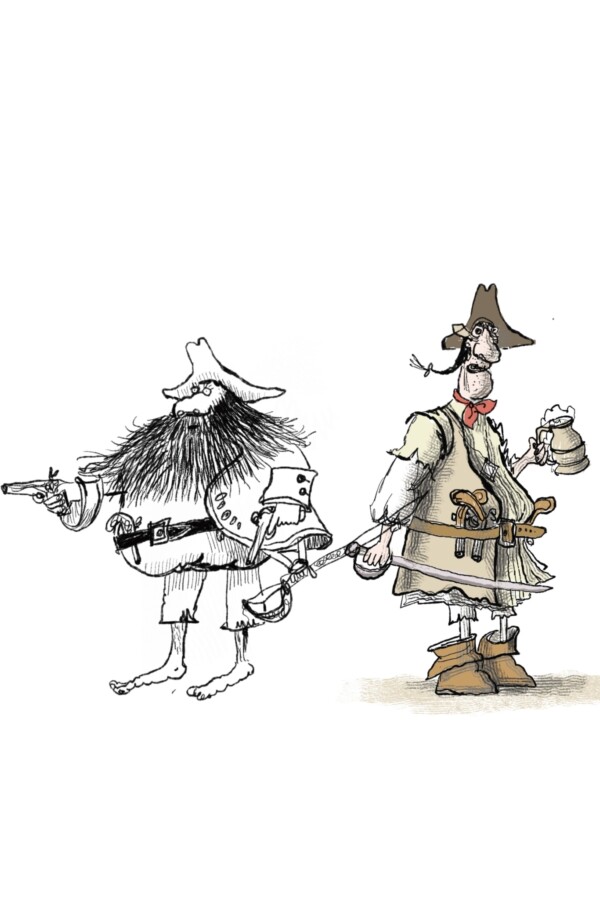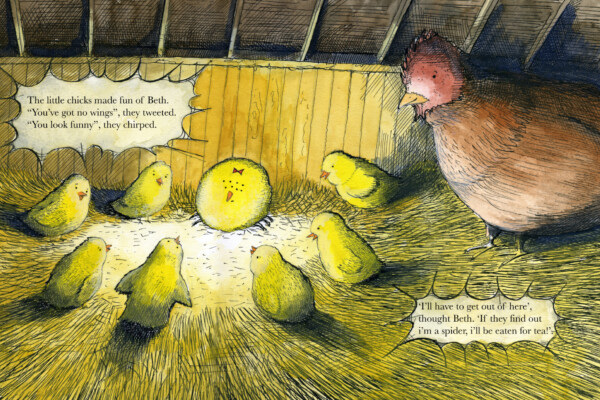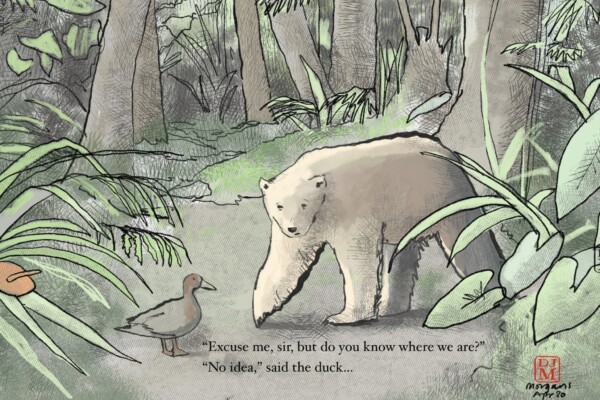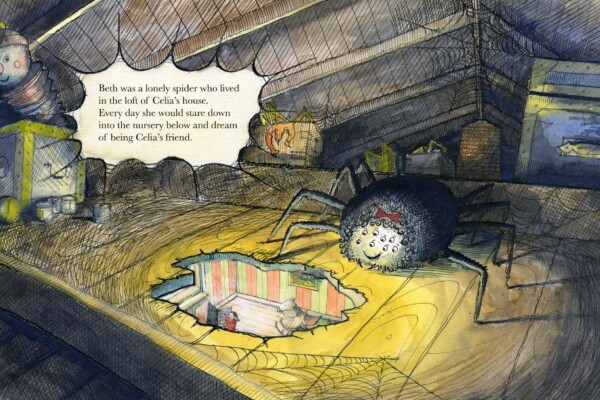
From sketch to reality: Associate Director Daniel Morgans on choosing the right sketching tools and materials
Where do you start when creating a concept sketch?
Quite often, it's with a spreadsheet! Usually, at the early stages of a project, it's about number crunching and understanding the amount and mix of space that needs to fit onto a site. Therefore, a variety of programmes, such as Bluebeam, AutoCAD and SketchUp, are useful for appreciating the various distances and space sizes, enabling me to draw a series of scaled boxes that can be traced over.
After I have a handle on the scale involved, I then get the tracing paper out along with a load of fat felt pens and a scale rule.
I often also find that how I think is heavily influenced by the scale that I am drawing at, the size of the pen and even the amount of space I have to fill on a page. Drawing small is the way forward at the early stages, as I feel that I am wasting less work and can cover the area with far smaller movements of the pen.
The initial sketches form the basis for further dialogue with clients and others?
Yes, definitely, and a hand sketch feels more interactive and less exclusive than something that's drawn in CAD. Clients can be part of that process, whereas, if it's drawn in CAD lines, they can feel that they have been shut out.
Sketches can also feel more informative and tell a story, with overlaid text, ideas and vignettes that contribute to the narrative you are building. Generating SketchUp views too early can also invite the audience to become obsessed with detail and miss the point you are trying to communicate or invite comment on. There’s something to be said for keeping things vague in the early stages!
What do you use when you sketch?
It can vary depending on the type of drawing I'm trying to create. A complex plan is often better in mechanical pencil as I am constantly trying and undoing parts of the scheme. I’m a bit of a pen geek and I love the weight of a Rotring 600 – the weight helps me draw better lines. For a perspective, a carefully traced pen drawing, usually a 0.3mm Fineliner or Rotring Isograph, tends to look a lot neater and comes to life when coloured in Photoshop or with some felt pens. Japanese Fude pens are also great, as they give a great variety of line thicknesses.
If the drawing is about trying to evoke an atmosphere or a particular quality of the site, then watercolours or charcoal work well, and a digital version of this, called Rebelle, is useful for undoing mistakes on the go.
Recently, I have taken to drawing using a programme called Procreate on iPad Pro with the Apple pencil. This has the advantage of being able to move parts of the sketch around and also has perspective guides to help structure the composition. It’s great for colouring too. I often try to replicate the perfect fountain pen nib in digital form.
Why is sketching useful?
It's about speed and fluidity, and about generating ideas quickly. It's also about removing limits, as it's very tempting to design what you know you can model if you're relying on 3D programs.
Do you practice other forms of drawing?
Yes, I love drawing, and quite often draw children’s book illustrations to “keep my eye in” and also love the unlimited sense of imagination in that genre. It’s also important to draw in different styles, such as charcoal, so that I think in terms of tone and shape as well as lines and edges.
I also study great artists and often replicate the various styles of others’ work, such as cartoonists like Ronald Searle, urban sketchers like Lucinda Rogers and various children’s book illustrators to understand their process. It’s important to keep sketching too; I find my lines are quite inaccurate after a long break!
Drawing is a lifelong skill, and something I'll be doing until I can no longer lift a pen!
Children book illustrations

